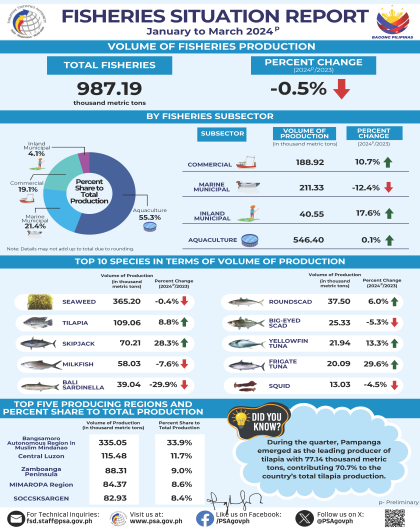Fisheries Situation Report, January to March 2024

During the third quarter of 2021, total fisheries production of 995.47 thousand metric tons went down by -2.1 percent from the 1,016.46 thousand metric tons output a year ago. Decreases in production were noted in commercial, marine municipal fisheries, and aquaculture. Only inland municipal fisheries displayed improvement in production. (Figure 1 and Table 1)

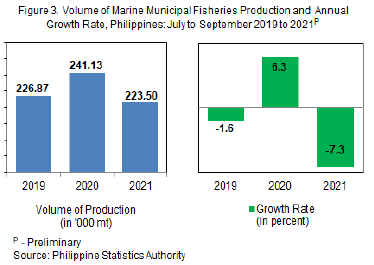
During the period commercial fisheries volume of production went down by -10.3 percent at 228.78 thousand metric tons compared to its previous year’s same level output of 255.11 thousand metric tons. The subsector’s share to total fisheries was 23.0 percent. (Figure 2 and Table 1)
Marine municipal fisheries came up with 223.50 thousand metric tons output during the quarter, a -7.3 percent drop from the third quarter 2020 level of 241.13 thousand metric tons. Of the total fisheries production, the subsector comprised 22.5 percent. (Figure 3 and Table 1)
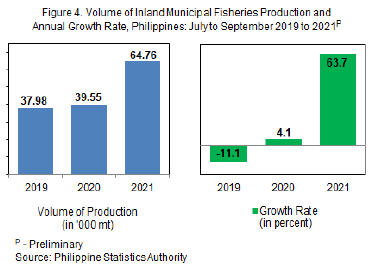
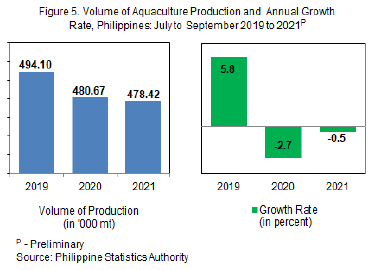
Inland municipal fisheries production was recorded at 64.76 thousand metric tons. This volume was 63.7 percent higher than the third quarter 2020 record of 39.55 thousand metric tons. About 6.5 percent of the total fisheries output came from inland municipal fisheries. (Figure 4 and Table 1)
Total harvests from aquaculture farms reached 478.42 thousand metric tons from 480.67 thousand metric tons a year ago, this is equivalent to -0.5 percent decline during the quarter. Aquaculture subsector constituted the biggest share of 48.1 percent to total fisheries production. (Figure 5 and Table 1)
Of the 20 major species, double digit production cuts were mainly noted in bigeye tuna (tambakol/bariles, -41.1%), blue crab (alimasag, -22.1%), frigate tuna (tulingan, -21.1%), yellowfin tuna (tambakol/bariles, -19.9%), threadfin bream (bisugo, -19.1%) and slipmouth (sapsap, -12.4%). (Table 2)
On the other hand, significant increments were reported in mudcrab (alimango, 29.2%), milkfish (bangus, 9.9%), big-eyed scad (matangbaka, 9.7%), cavalla (talakitok, 9.4%) and fimbriated sardines (tunsoy, 7.0%). (Table 2)
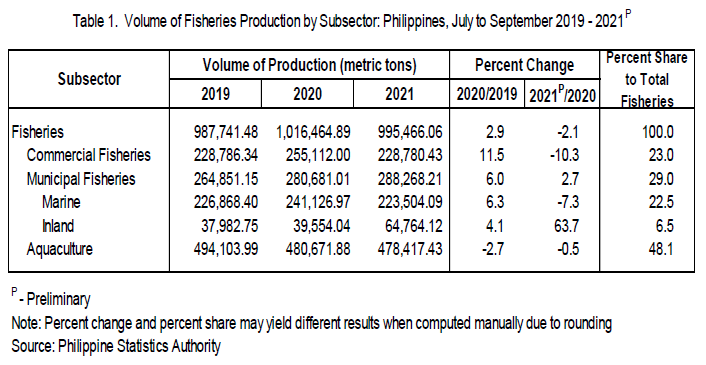
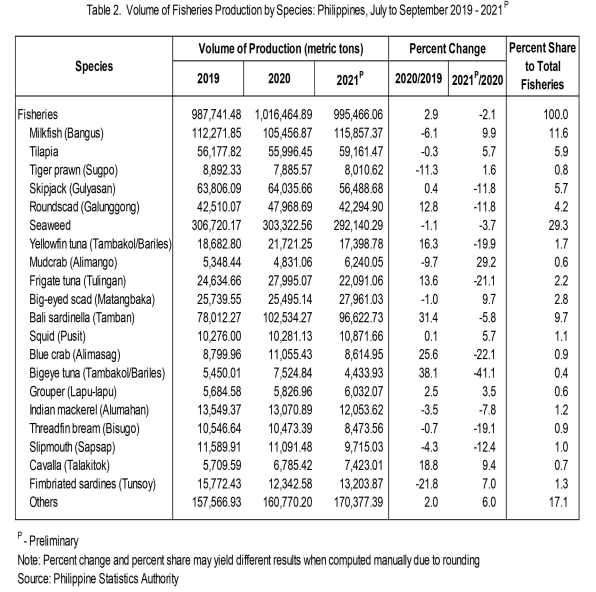

DENNIS S. MAPA, Ph.D.
Undersecretary
National Statistician and Civil Registrar General

